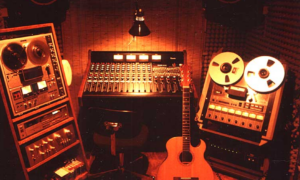The world of music owes much of its magic to the skilled hands and visionary minds of music producers. These unsung heroes work behind the scenes, shaping sonic landscapes and bringing artists’ visions to life. From chart-topping hits to timeless classics, the greatest music producers of all time have left an indelible mark on the industry, creating sounds that resonate through generations. In this blog post, we take a captivating journey through the lives, careers, and lasting impact of some of the most iconic music producers in history.

Phil Spector
Phil Spector’s pioneering “Wall of Sound” production technique revolutionized popular music. Through layering instruments and voices, he created a lush and immersive sonic experience that defined an era. His work with artists like The Ronettes and The Righteous Brothers produced timeless hits like “Be My Baby” and “You’ve Lost That Lovin’ Feelin’,”. Which continue to be celebrated for their unparalleled sound.
Quincy Jones
Quincy Jones stands as a legendary figure in the music world, effortlessly navigating genres from jazz to pop. A maestro in every sense, he produced Michael Jackson’s monumental album “Thriller,”.
George Martin
Often referred to as “The Fifth Beatle,” George Martin played an integral role in shaping The Beatles’ sound. His innovative ideas and orchestral arrangements elevated the band’s music to new heights, creating a sound that was both experimental and timeless. Martin’s collaboration with the Fab Four resulted in iconic albums like “Sgt. Pepper’s Lonely Hearts Club Band,” showcasing his ability to turn concepts into musical reality.
Rick Rubin
Rick Rubin’s production philosophy is rooted in simplicity and raw authenticity. He played a pivotal role in the rise of hip-hop and rock. He produced groundbreaking albums for artists like Run-D.M.C., Red Hot Chili Peppers, and Johnny Cash. Rubin’s “stripped-down” approach focuses on capturing the essence of an artist’s performance, resulting in impactful tracks that resonate with listeners on a profound level.
Brian Eno
Brian Eno’s influence extends beyond traditional pop and rock production. As a pioneer of ambient music. Brian Eno brought atmospheric textures and sonic experimentation to the forefront, influencing artists across genres and shaping the landscape of modern music.
Berry Gordy
As the founder of Motown Records, Berry Gordy shaped the course of American music history. His innovative production techniques and keen ear for talent gave birth to a powerhouse of artists. Whose chart-topping music hits continue to inspire generations.
Dr. Dre
Dr. Dre’s contributions to hip-hop production are immeasurable. With a keen ear for beats and a knack for crafting anthems, he laid the foundation for West Coast rap and produced groundbreaking albums like “The Chronic” and “2001.” Dre’s meticulous attention to sound quality, attention-grabbing beats, and ability to elevate artists’ performances have solidified his legacy as a music producer extraordinaire.
Brian Wilson
Brian Wilson’s genius as a music producer and composer led The Beach Boys to create some of the most intricate and harmonically rich music of their time. His productions pushed the boundaries of studio technology and paved the way for intricate arrangements. Wilson’s groundbreaking work on albums like “Pet Sounds” showcased his ability to create lush soundscapes.
Max Martin
Max Martin’s pop sensibilities have made him one of the most successful producers in modern history. His collaborations with artists like Britney Spears, Taylor Swift, and The Weeknd have resulted in chart-topping hits. Martin’s ability to craft infectious melodies, catchy hooks, and production techniques. These techniques stand the test of time and have earned him an unmatched position in the contemporary music landscape.
Conclusion
The legacy of these music producers is a testament to their creative genius. Through their work, they have not only shaped the music industry but have also left an indelible mark on the hearts of listeners worldwide. As we continue to enjoy the sounds they’ve crafted. We recognize the profound impact they’ve had on the art of music production.
You will find the following information useful:












